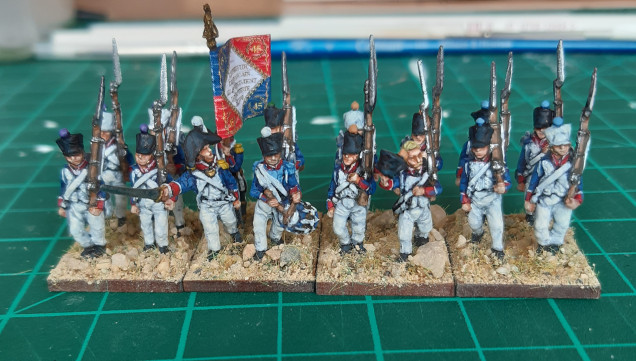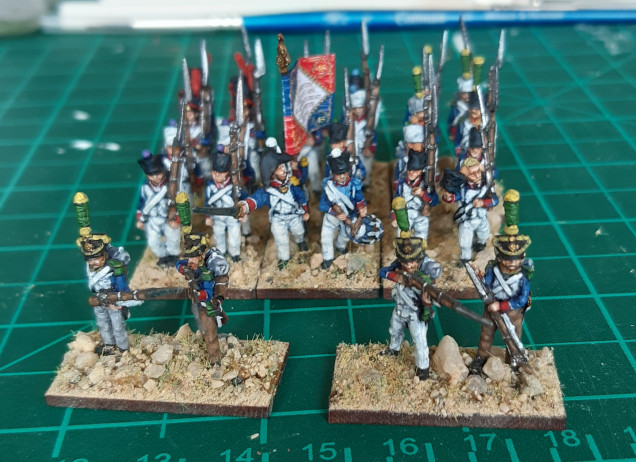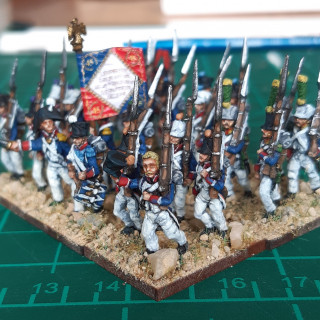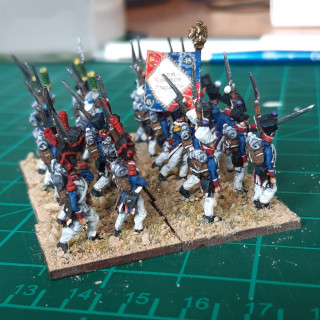
A Foray into Napoleonic Wargaming
2/45eme Regiment de Ligne
Another batch of Fusiliers and a command group have been finished, which means the second battalion of the 45eme is ready to join the first.
The second battalion was deployed alongside the 1/45eme for the majority of the Peninsula War, but it 1813 it was redirected to Germany after the disaster experienced by the Grand Armee in Russia. In Germany the 45th was charged with securing lines of communication, garrisoning strongholds and surveying the coasts.
All the models here are again by Xan, and the flag by Maverick Models. I particularly like the enthusiastic chap raising up his shako.
 A quick thank you for the Golden Button. Hearing positive comments and seeing recommendations are really appreciated and help keep motivation high.
A quick thank you for the Golden Button. Hearing positive comments and seeing recommendations are really appreciated and help keep motivation high.A small note on some of the details seen in the last two posts for anyone new to Napoleonics. After 1808, Napoleon reorganised the structure of the Grand Armee. From that point onwards, each battalion was formed of six companies, and totaled 840 men (although battalions were rarely at full strength due to casualties and recruitment issues). For Line Infantry, two companies were the elites, the Grenadiers and the Voltigeurs. Also called flank companies, these formed at the right and left ends of the battalion respectively when formed in line.
The other four companies were composed of Fusiliers, with each company identified by a different coloured pom pom. 1st company had dark green, 2nd company sky blue, 3rd company orange, and 4th company violet. With the way I base my battalions, 1st company is usually represented by the command stand.
Some sources state that the 2nd battalions often unofficially had a white dot at the centre of the pom pom. I decided not to add that detail here, but might on another battalion later.
The drummer here has sky blue details. This was something specific to the 45eme that I picked out from browsing through images from a re-enactment group. Most French line infantry regiments had drummers dressed as per the fusiliers, but with orange, green or tricolour coloured piping. In 1810 drummer uniforms changed to a green jacket with white facing and red piping. This didn’t see full adoption until 1812.































![TerrainFest 2024 Begins! Build Terrain With OnTableTop & Win A £300 Prize! [Extended!]](https://images.beastsofwar.com/2024/10/TerrainFEST-2024-Social-Media-Post-Square-225-127.jpg)















































Leave a Reply